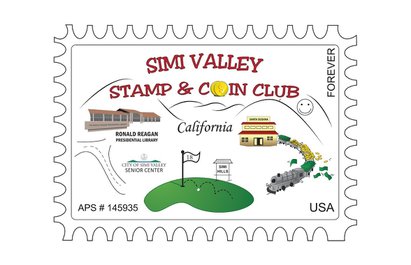Marc’s Holiday Postcard Project
A Case Study in OCD (Obsessive-Compulsive Deltiology)
Contributed by
(Updated for Christmas 2023)
Before Facebook, before Instagram, before Pinterest; before television, telephones, and telecommuting, there were postcards. Billions of them.
A confluence of newfangled printing technologies, national and global transportation capabilities, and a phenomenal cultural craze led to the mass production on a worldwide scale of 9 cm x 14 cm (3½” x 5½”) rectangles of cardstock, adorned with elaborate engravings on one side and space for an address, a message, and a postage stamp on the other.
Commencing in earnest around the turn of the twentieth century, postcards took the world by storm. With postcards available for a penny each and ready to be mailed for another cent, friends, families, and businesses were able to connect with each other across town or across the nation – and even overseas. Locally mailed, a sender could drop a postcard in the mailbox in the morning and receive a response via a reply postcard the same afternoon. It was the texting and e-mail of its day.
Most postcard printing technology was centered in the German Empire. Many postcard manufacturers gathered their designs from across the world but published their wares in Germany, adding an inscription such as “Printed in Bavaria”, only to ship back their products to their customers for local consumption. Then, as the world was plunged into the Great War in 1914, supplies of paper and ink became precariously scarce. Transportation ground to a halt; and just as quickly as the postcard craze had begun, it had ceased by 1918.
Postcards would continue to be written and sent to the present day, but with new technologies grabbing the public’s attention, the postcard fad would never return to its golden age.
Still, families would archive their postcards received during their heyday from distant points across the globe, often retaining the cards in treasured albums. Gathering dust over the decades, postcards would be passed down or sold at estate sales or at antique stores – and ultimately to collectors, over many a year.
Among the most beautiful and elaborate postcards sent during those halcyon Edwardian days were Christmas postcards. These cards represented the Yuletide Shutterfly of the Roosevelt, Taft, and Wilson administrations. Illustrators and painters famous in their times would design quaint and adorable imagery of St. Nick bringing toys to children in wintry landscapes which today elicit whimsical and idyllic memories of an American past.
Before 1907, the United States Post Office Department limited postcards to an image on one side and an address on the other side, leaving precious little room for messages to be written. This 1906 postcard from my collection contains a printed Christmas message on one side, with a handwritten greeting below it. On the other side are the recipient’s address in Milwaukee, Wisconsin, a postmark dated December 24, 1906 – just in time for Christmas! – and a 2¢ stamp (most likely Scott catalog #319).1
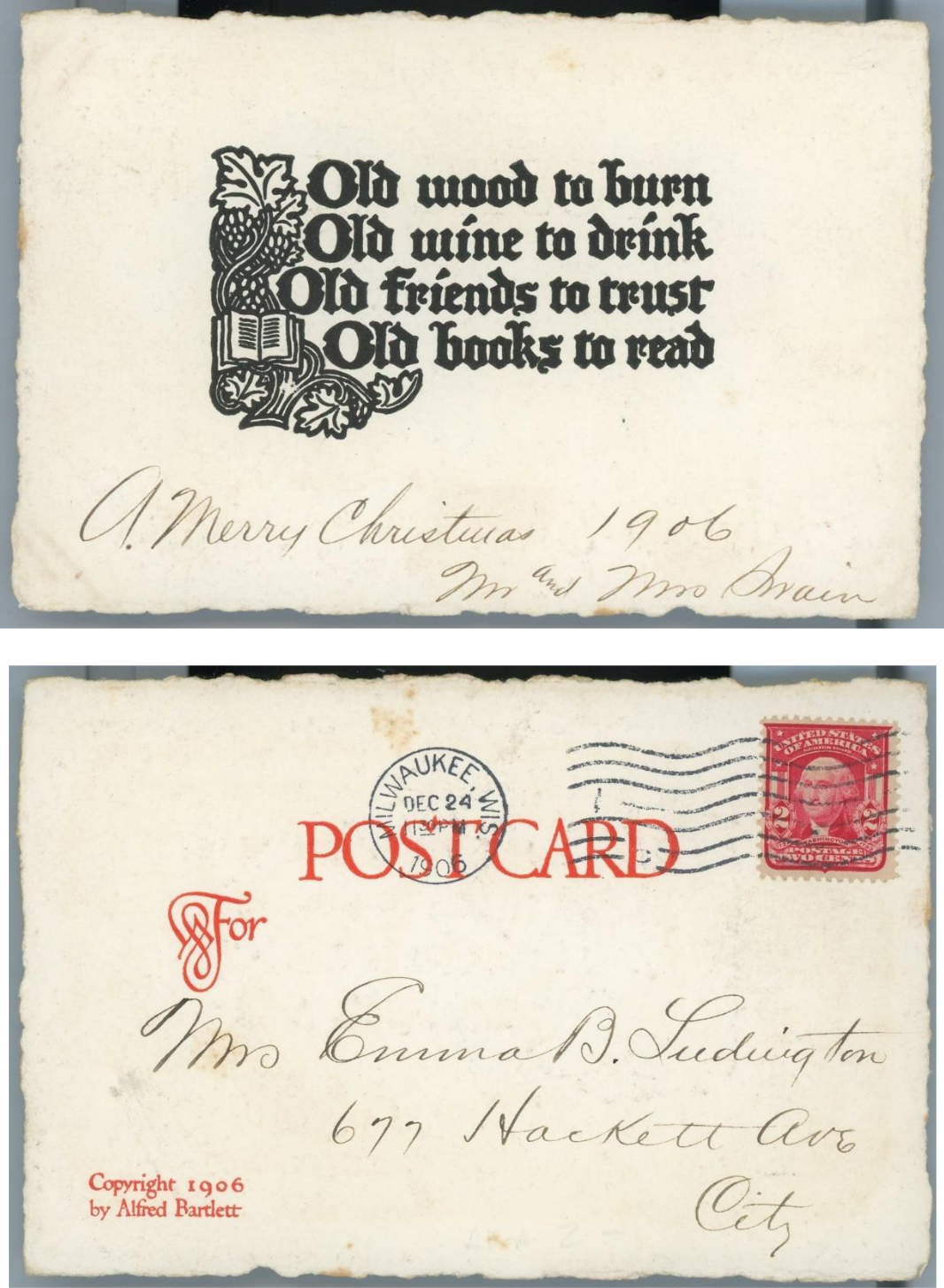
Many countries (among them Great Britain in 1902, France in 1904, and Germany in 1905) had already permitted postcards to include a so-called “divided back” on the message side. This enabled senders to write the recipient’s address on the right side of the card and a personal message on the left side, thus leaving the picture side of the card completely free of text scrawled on the edges or corners.
The United States followed suit on March 1, 1907. An even greater boom in postcard mania resulted. By Christmas of 1907, even teachers were mailing Yuletide greetings to their students, as shown in this postcard from my collection. Here is the front side of the card, showing Santa descending a chimney bringing “many nice things to such a good boy as you”:
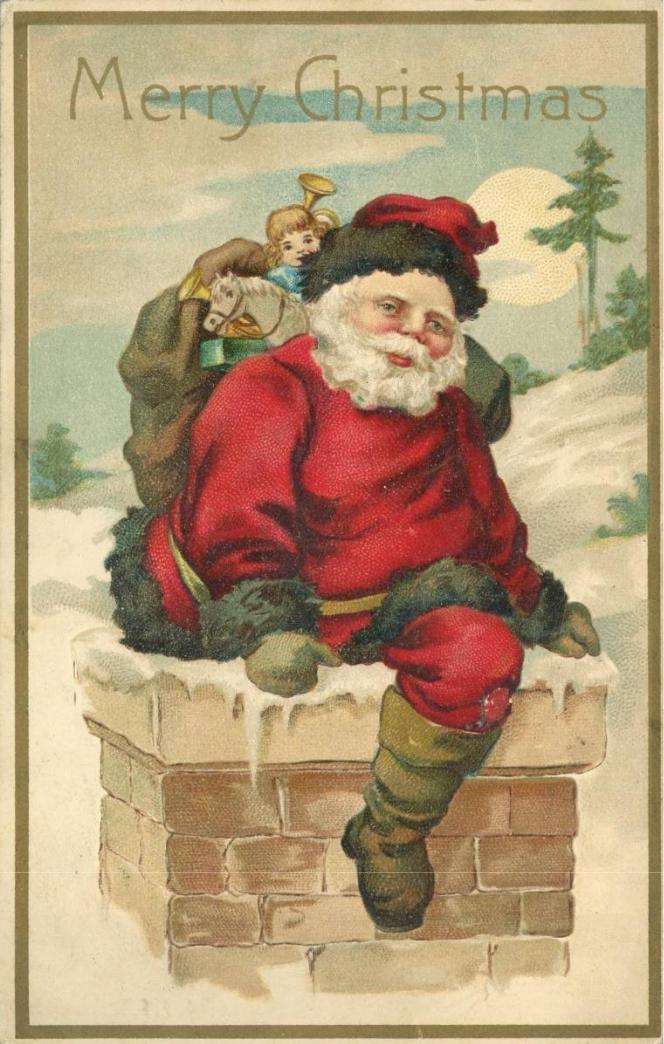
The address side of this card, also mailed in the nick (no pun intended) of time on December 24, 1907, in Baltimore, Maryland, shows the lost art of penmanship, to be expected from a teacher such as “Miss Lynda” addressing her pupil “Master Carl Peterson”. (Note the printed inscription “made in Germany”.)
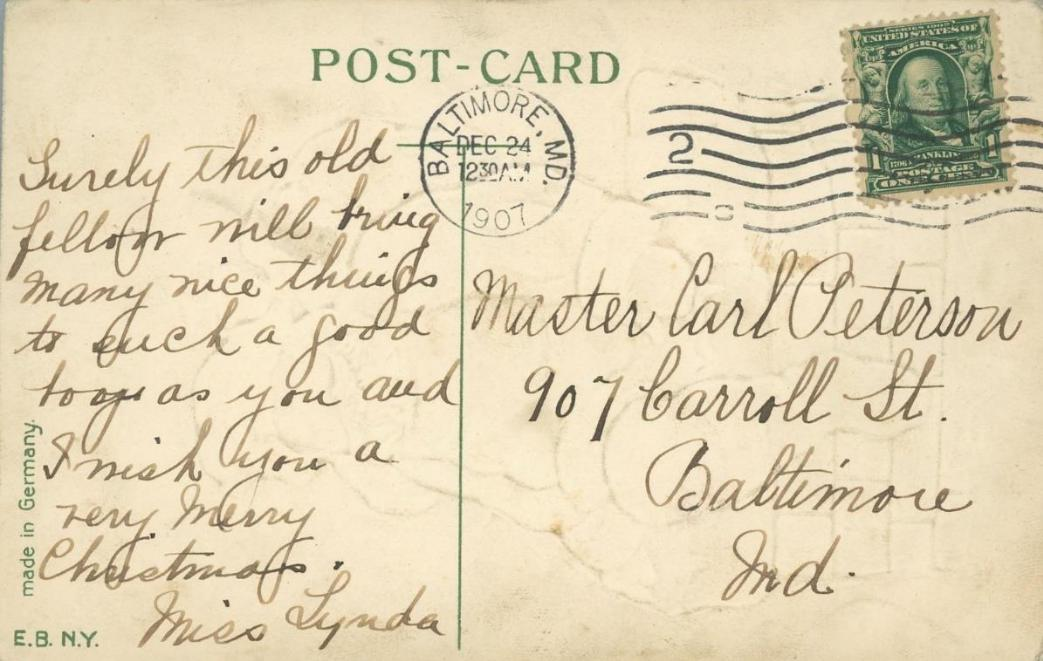
The familiar corpulent red-suited Santa had become a well-known image to Americans since the 1863 portrait drafted by caricaturist Thomas Nast, generally credited as the first artist to illustrate St. Nick.
Yet at the turn of the twentieth century, Santa’s red suit was not his only attire as we know it today. Rather, during the golden age of postcards, Santa appears in a coat of many colors. In this card from my collection, mailed in Emerson, Iowa, in 1911, Santa is shown wearing a golden suit:
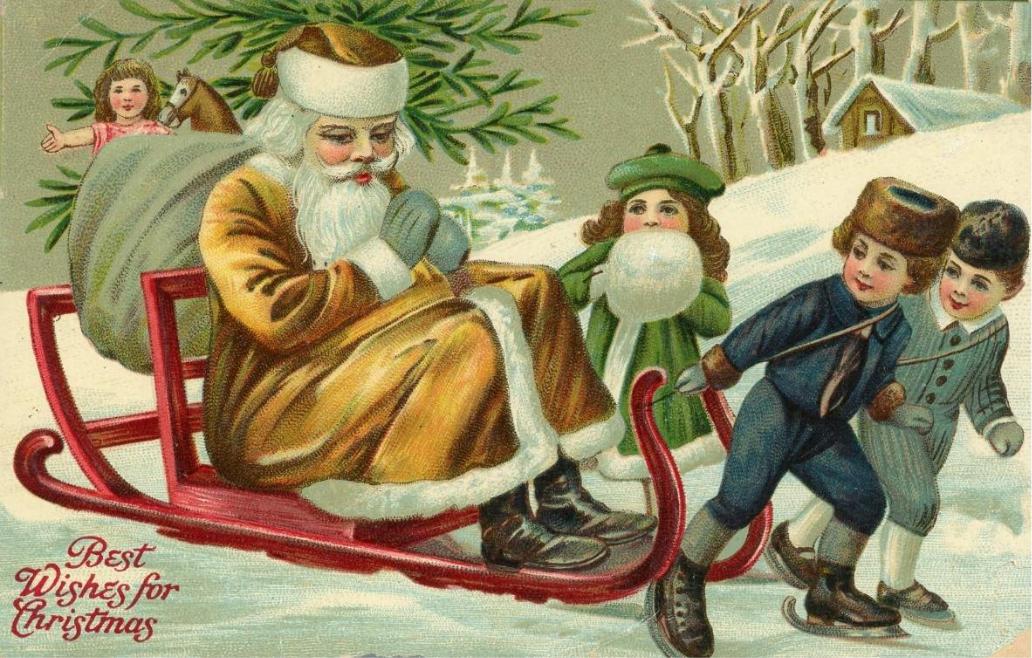
Despite the popularity of Christmas postcards (and greeting cards in general) dating back more than a century, United States postage stamps did not display a Christmas message or theme – until 1962! There was considerable controversy in the United States Post Office Department (then a cabinet-level department) and across civic society about the putative violation of the separation of church and state which a United States Christmas stamp might create.2
Nonetheless, with the awareness that postal customers had requested such a stamp for years, the United States Post Office Department issued its first Christmas stamp in Pittsburgh, Pennsylvania – and then nationwide – on November 1, 1962, in time for holiday mailings. During the stamp dedication ceremony, Postmaster General J. Edward Day said that the new stamp would be the first in a series of Christmas stamps – and correct he was, as Christmas stamps have been issued annually ever since.
Here is an image of the first Christmas stamp issued by our country (Scott catalog #1205), and the only such 4¢ stamp. (Due to inflation, the first-class letter rate would rise to 5¢ in time for Christmas 1963.) 2 Countries worldwide had already issued Christmas postage stamps as early as 1898 (Canada), 1937 (Austria), 1939 (Brazil), 1943 (Hungary), 1951 (Cuba), and many more thenceforth. Alone among Muslim stamp-issuing authorities, the Palestinian Authority has issued Christmas postage stamps since the mid-1990’s.
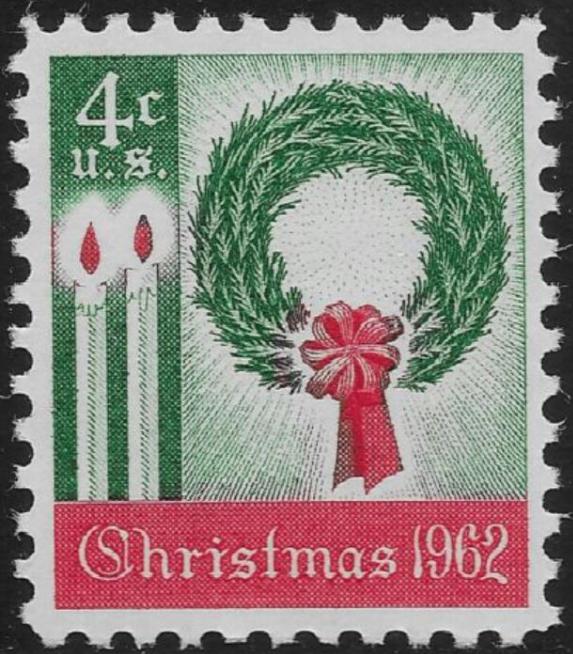
Anticipating a huge demand for the new Christmas stamp, the Post Office Department had 350 million printed — the largest number produced for a special stamp to that time. The red and green stamp featured a wreath, two
candles, and the words “Christmas 1962”, without any religious imagery – Madonna and child, for example – which would adorn later years’ stamps.
The initial supply sold out rapidly, and the Bureau of Engraving and Printing began working around the clock to print more. By the end of 1962, one billion Christmas stamps had been printed and distributed!
With the popularity of Christmas stamps over the years, it would be only a matter of time before other religious holidays would be commemorated on postage stamps as well. The first Hanukkah stamp was issued in the United States in 1996; Kwanzaa, 1997; Eid, 2001; and Diwali, 2016, as shown here:
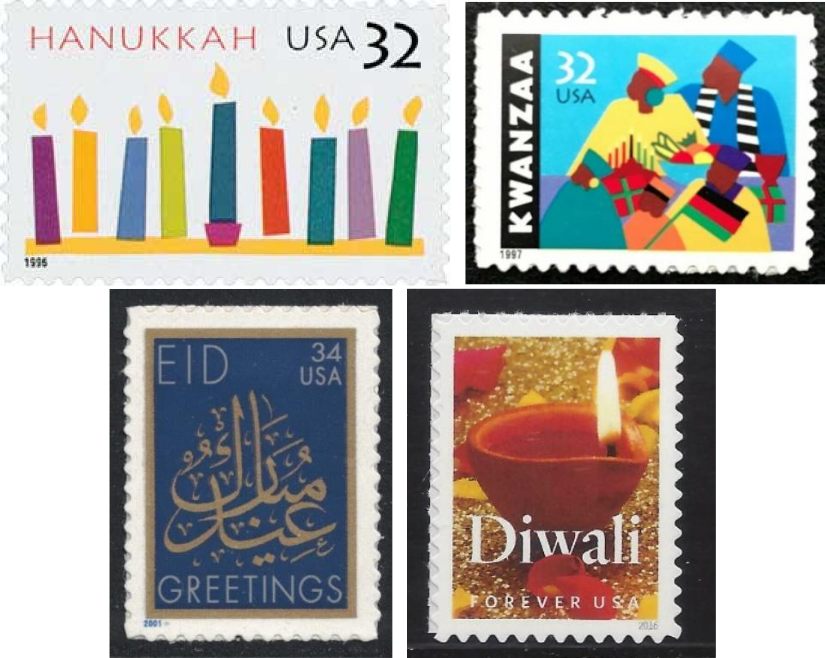
(Note that stamps issued through 2007 carried a specific denomination, in cents. Generally after 2007, and in all cases since 2011, first-class letter stamps now carry a “Forever” denomination – meaning, they will always be valid for the then-current first-class letter postage rate. Postcard, global [international], and second-ounce stamps, among others, also now typically carry non-denominated verbiage.)
As we well know, inflation has continued unabated to this day. The current Postmaster General, Louis DeJoy, has implemented a plan to increase postage rates twice a year – each January and July – until income meets the costs of operating the United States Postal Service (the successor to the Post Office Department), which never relies on tax dollars. The first-class letter postage rate increased from 60¢ to 63¢ on January 22, 2023 – postage increases always occur on a Sunday, by the way, when no mail is actually postmarked – and the postcard rate increased from 44¢ to 48¢ on the same day.
Rates increased again in the summer such that by Christmas 2023, the letter rate now stands at 66¢, and the postcard rate, 51¢. On January 21, 2024, the letter and postcard rates will increase to 68¢ and 53¢, respectively.
Inflation notwithstanding, there has been a precipitous drop in demand for postage, due to electronic commerce and communication. As an example, the postmaster in the town of Christmas Valley, Oregon (referenced later in this document) stated that in 2022, he had postmarked fewer than 500 Christmas cards, yet he had postmarked Christmas cards “well into the thousands” in years past.3
The result has been a “dumping” of philatelic material, including mint (unused) vintage Christmas stamps from 1962 to the present day, available to collectors at 25%, 30%, or even 50% below the original face value sold by post offices nationwide. Given my interest in vintage stamps (which could be applied to vintage postcards, and then mailed to family and friends), I have procured a panoply of Christmas stamps from over the years – keeping in mind, by law (since the start of the Civil War!), these stamps will never lose their postal value.
Here is a photo of just some of my vintage United States Christmas postage stamps:
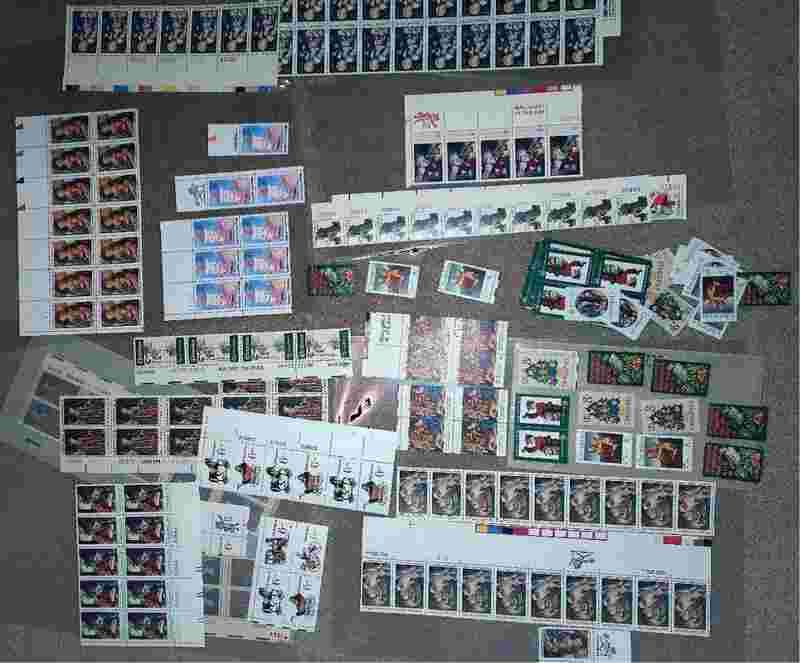
To keep the century-old spirit of vintage Christmas postcards alive, and using Christmas stamps dating back more than half a century, there is only one more element to make my holiday postcard project complete: Christmas-themed postmarks from post offices across the nation.
Why drop Edwardian-themed Christmas postcards at my local post office when I could request holiday-themed postmarks to be affixed from distant post offices such as:
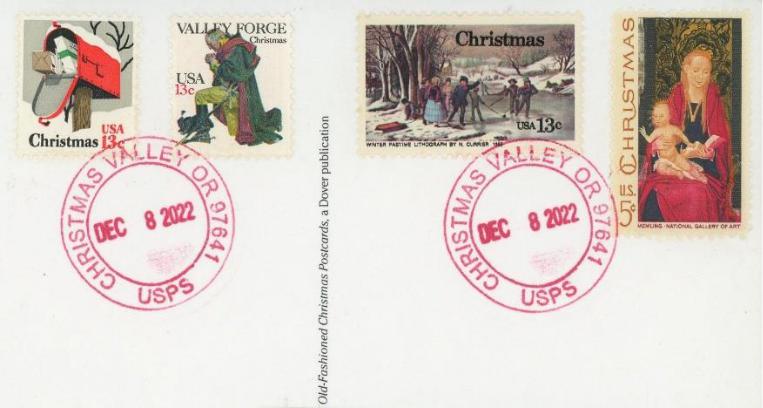
Christmas Valley, Oregon (mentioned previously) – population: 1,313
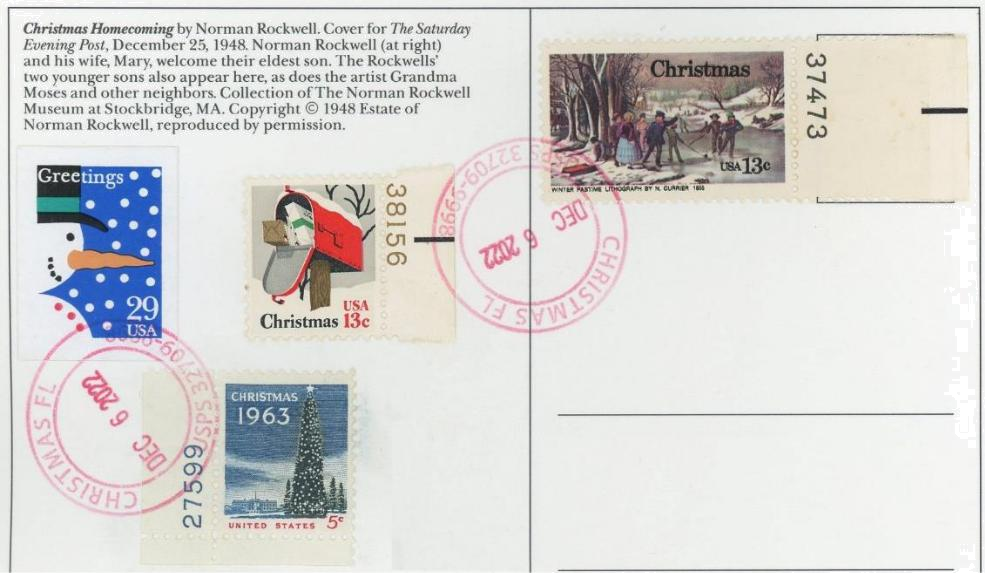
Christmas, Florida – population: 2,439
(Note the second U.S. Christmas stamp ever issued, denominated 5¢, dating to 1963.)
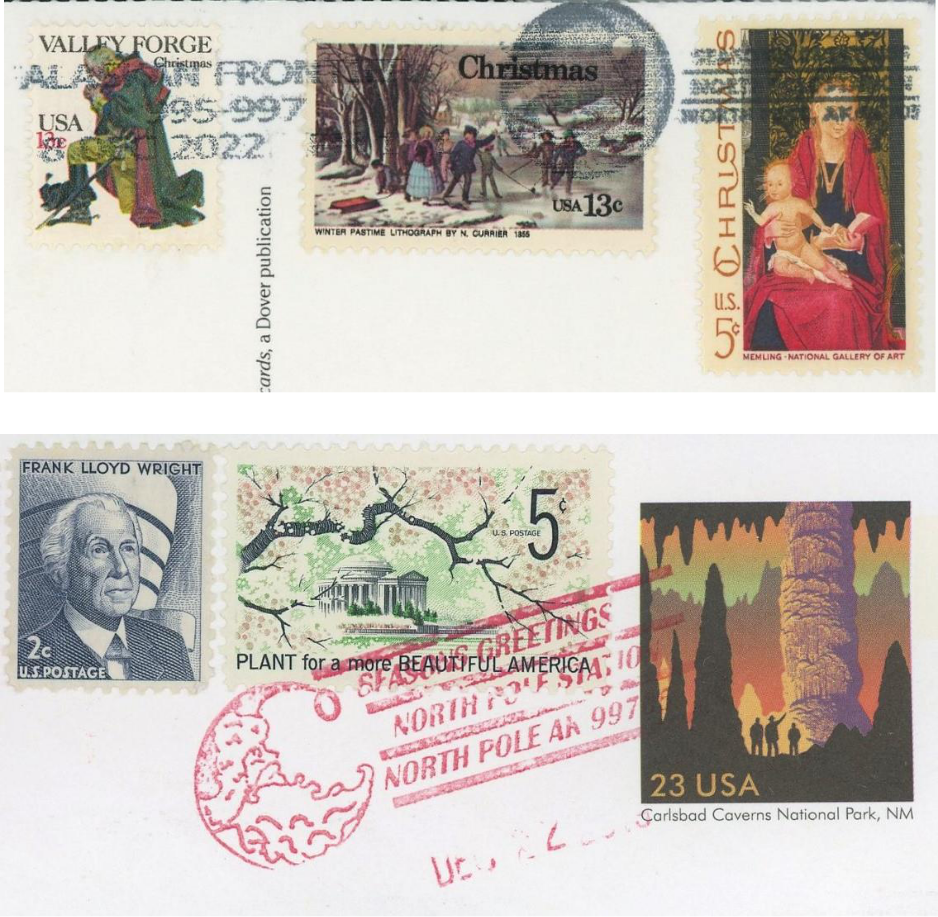
Alaskan Frontier/North Pole Station, Alaska – population: 2,285
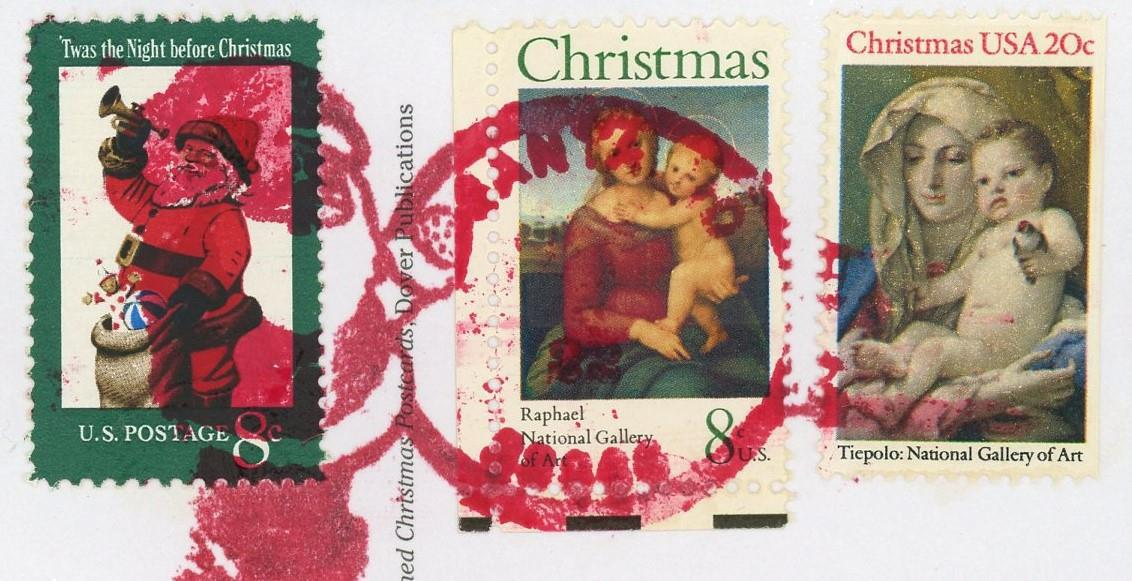
Santa, Idaho – population: Around 300 (depending on the number of elves working that day)
(Looks like Santa had a bit too much eggnog when this postmark was applied!)
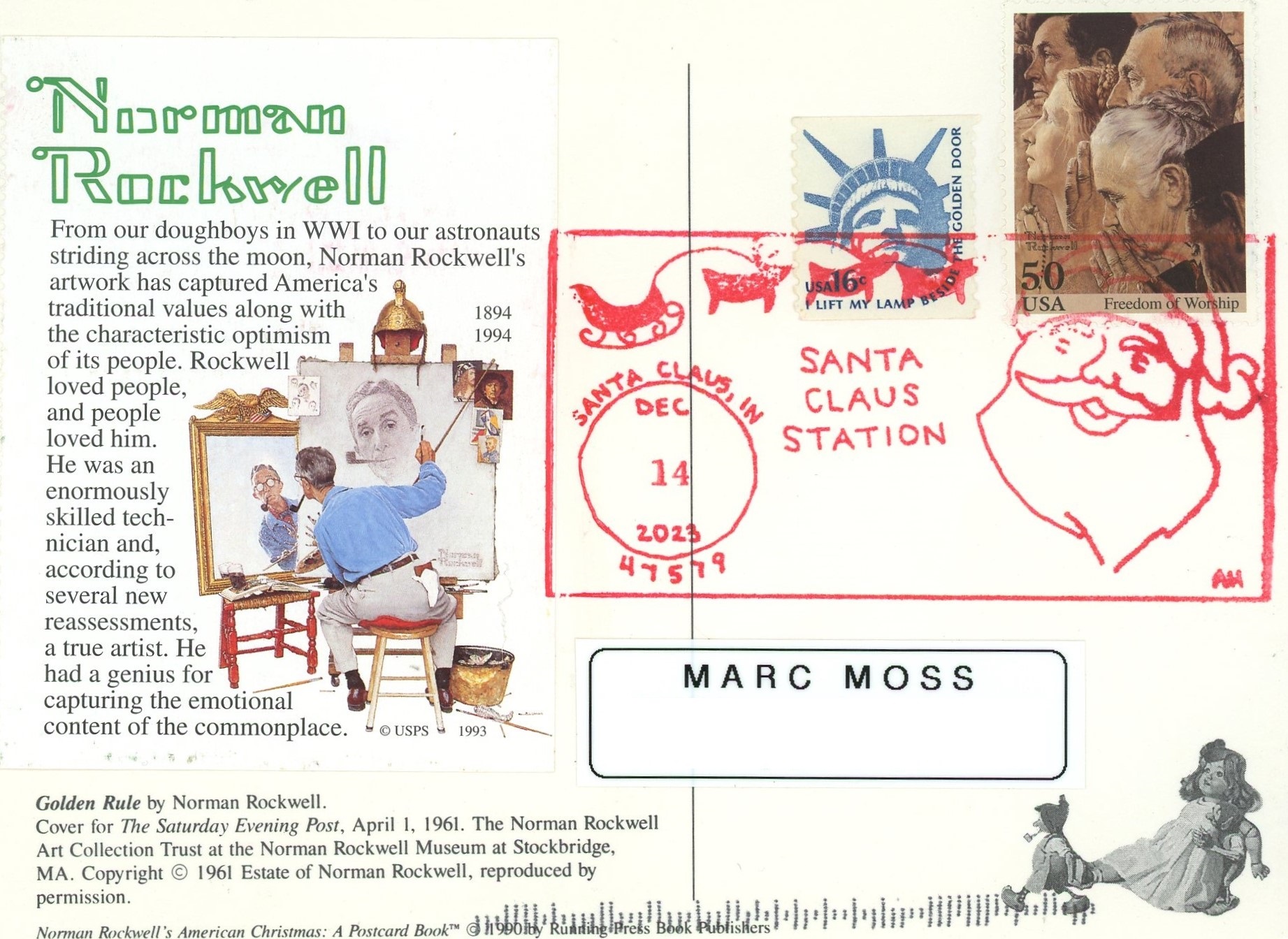
Santa Claus, Indiana – population: 2,579
This year’s pièce de résistance celebrates the work of American painter Norman Rockwell.
(When was the last time you received a postcard directly from Santa Claus?)
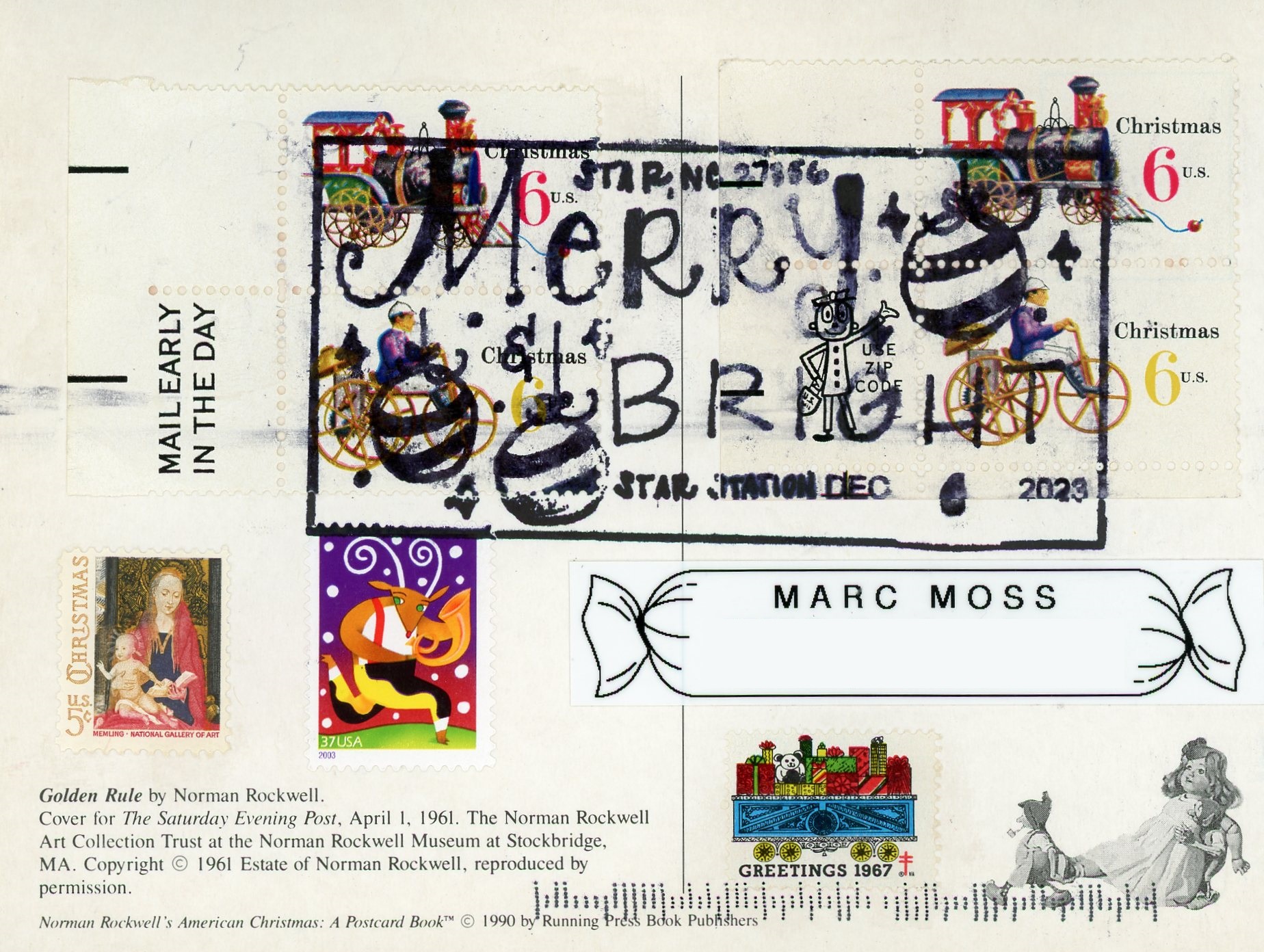
Star, North Carolina – population: 812
This year’s design is “merry and bright” with Christmas ornaments.
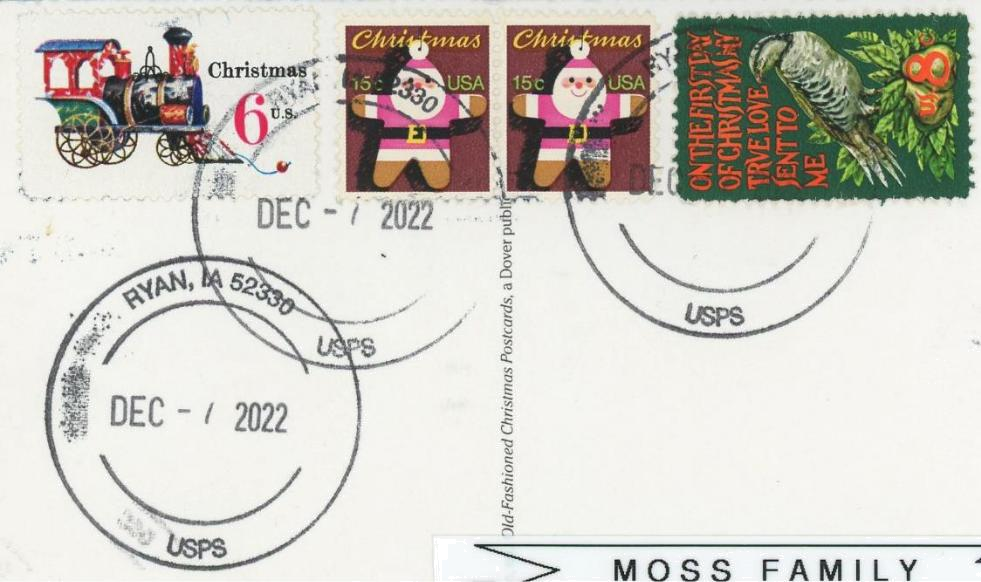
And for my friends named Ryan, or with family members named Ryan,
how about a postcard from Ryan, Iowa? – population: 351
How does one obtain a postmark from distant post offices such as Christmas, Florida, or Ryan, Iowa? Simply mail a stamped, addressed postcard – or sixty, as I did! – to the postmasters in various locations with a request for “Christmas remailing”. Postmasters are happy to comply with affixing a local postmark and sending the cards onward to the intended recipients.4
Which postcard did you receive, and with which vintage Christmas stamps, and with which holiday-themed postmark?
On that note, I wish one and all a very merry Christmas and a happy new year – and next year, at Christmastime 2024, remember to check the postmark on your postcards!
_________
- Why the sender chose to use a 2¢ stamp is not clear, when the standard postcard rate at the time was 1¢. See the Smithsonian Postal Museum’s postcard rate history at https://postalmuseum.si.edu/us-domestic-postcard-rates
- Countries worldwide had already issued Christmas postage stamps as early as 1898 (Canada), 1937 (Austria), 1939 (Brazil), 1943 (Hungary), 1951 (Cuba), and many more thenceforth. Alone among Muslim stamp-issuing authorities, the Palestinian Authority has issued Christmas postage stamps since the mid-1990’s.
- See https://www.kdrv.com/news/christmas-valley-experiencing-a-low-point-in-christmas-card-postmarks/article_0e2820a4-7a73-11ed-b14a-2f3ef79bcf51.html
-
See https://about.usps.com/postal-bulletin/2012/pb22349/html/cover_009.htm
